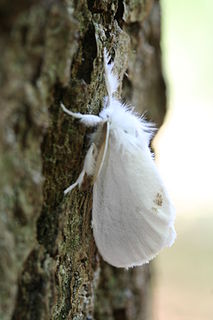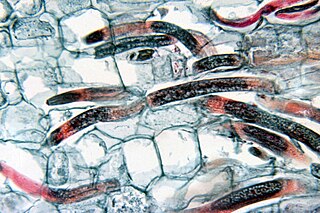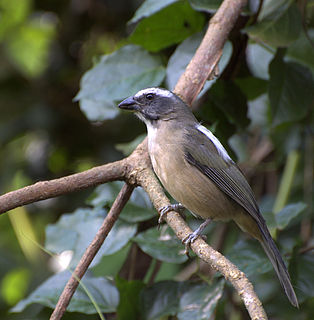Related Research Articles

The long-billed pipit or brown rock pipit is a passerine bird which has a wide distribution. A number of subspecies have been created for the populations in Africa, through the Arabian peninsula and South Asia. The systematics of this complex is yet to be clarified. Most birds are residents or short distance migrants.
In ancient Celtic religion, Sulevia was a goddess worshipped in Gaul, Britain, and Galicia, very often in the plural forms Suleviae or (dative) Sule(v)is. Dedications to Sulevia(e) are attested in about forty inscriptions, distributed quite widely in the Celtic world, but with particular concentrations in Noricum, among the Helvetii, along the Rhine, and also in Rome. Jufer and Luginbühl distinguish the Suleviae from another group of plural Celtic goddesses, the Matres, and interpret the name Suleviae as meaning "those who govern well". The Suleviae have been identified in one inscription with the Junones, but mostly with the Matres, for example on an inscription from Roman Colchester, as well as on most of the inscriptions from Rome. The Colchester inscription reads:

The yellow-tail, goldtail moth or swan moth is a moth of the family Erebidae. The species was first described by Johann Kaspar Füssli in 1775, and has commonly been placed within the related genus Euproctis. It is distributed throughout Europe to the Urals, then east across the Palearctic to Siberia and south to India and Sri Lanka.

Radopholus similis is a species of nematode known commonly as the burrowing nematode. It is a parasite of plants, and it is a pest of many agricultural crops. It is an especially important pest of bananas and citrus, and it can be found on coconut, avocado, coffee, sugarcane, other grasses, and ornamentals. It is a migratory endoparasite of roots, causing lesions that form cankers. Infected plants experience malnutrition.

The social flycatcher is a passerine bird from the Americas, a member of the large tyrant flycatcher family (Tyrannidae).

The green-winged saltator is a species of saltator in the family Thraupidae. It is found in Argentina, Bolivia, Brazil, Paraguay, and Uruguay, and ranges into the southern cerrado and the pantanal.

The mountain yellow warbler or mountain flycatcher-warbler is a species of Acrocephalidae warbler; formerly, these were placed in the paraphyletic "Old World warblers".

Anadara is a genus of saltwater bivalves, ark clams, in the family Arcidae. It is also called Scapharca.

Ctenosaura similis, commonly known as the common spiny-tailed iguana or black iguana, is a lizard native to Mexico, Central America, and some Colombian islands in the Caribbean Sea and Pacific Ocean. It has been introduced to the United States in the state of Florida. It is the largest species in the genus Ctenosaura.

Callinectes similis, sometimes called the lesser blue crab or dwarf crab, is a West Atlantic species of blue crab. It was described by Austin B. Williams in 1966.

Apodasmia similis, also known as oioi or jointed wire rush, is a plant that is endemic to New Zealand. It is a coastal plant but is also found around peat bogs and hot springs. It flowers from October to December and bears fruit from December to March.
Similodonta is an extinct genus of early bivalve in the extinct family Praenuculidae. The genus is one of eleven genera in the subfamily Praenuculinae. Similodonta is known from Middle Ordovician through Middle Silurian fossils found in Europe and North America. The genus currently contains eight accepted species, Similodonta ceryx, Similodonta collina, Similodonta djupvikensis, Similodonta magna, Similodonta recurva, Similodonta spjeldnaesi, Similodonta wahli and the type species Similodonta similis.
Eupromera is a genus of longhorn beetles of the subfamily Lamiinae, containing the following species:

The Simili Tour was the eighth concert tour by Italian singer Laura Pausini. Launched in the spring of 2016, the tour promoted her twelfth studio album Simili (2015). Over the course of five months, the tour visited Europe and the Americas.

Simili is an Italian-language studio album by Italian singer Laura Pausini. Released on 6 November 2015, it is her twelfth studio album. Pausini also made a Spanish version of the album Similares, released on 13 November 2015. The first single was released on 25 September 2015 in two versions; in Italian "Lato Destro del Cuore", and the Spanish version "Lado Derecho del Corazón". The Spanish-language version of the album received a nomination for a Grammy Award for Best Latin Pop Album.
Eupromera disparilis is a species of beetle in the family Cerambycidae. It was described by Galileo and Martins in 1995. It is known from Brazil.
Eupromera gilmouri is a species of beetle in the family Cerambycidae. It was described by Ernst Fuchs in 1961. It is known from Brazil.
Eupromera spryana is a species of beetle in the family Cerambycidae. It was described by Westwood in 1846. It is known from Brazil.
Eupromera zonula is a species of beetle in the family Cerambycidae. It was described by Galileo and Martins in 1995. It is known from Brazil.
Gryphoca is an extinct genus of earless seals from Neogene marine deposits in the North Sea basin.
References
- ↑ BioLib.cz - Eupromera similis. Retrieved on 8 September 2014.